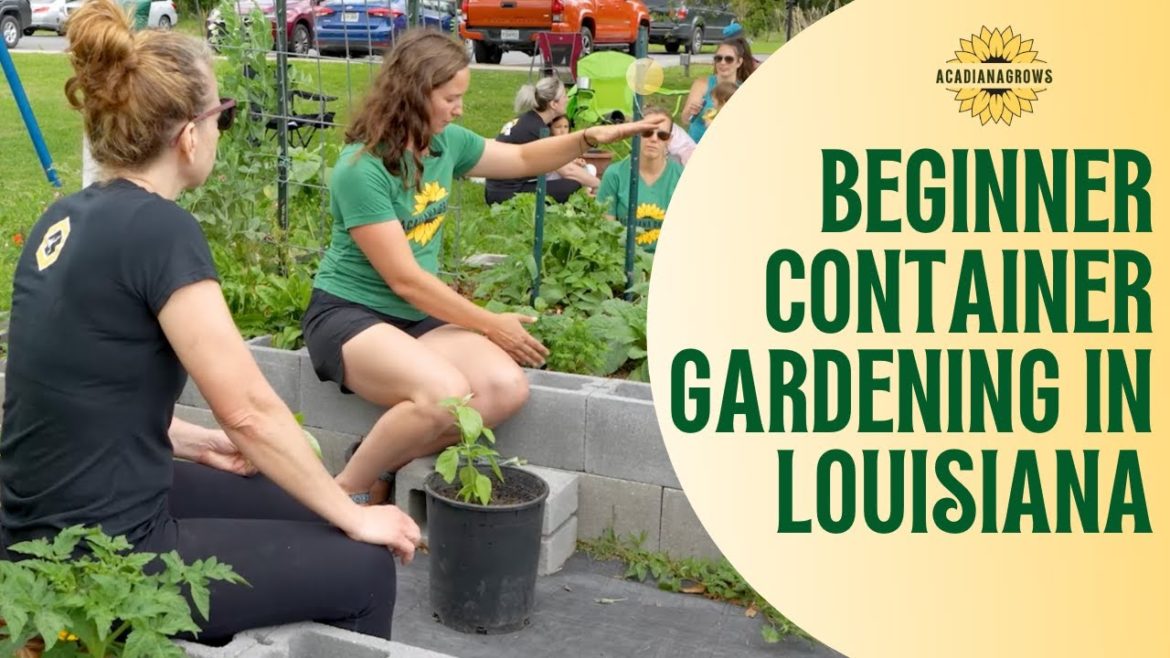Are you growing in containers? Our Beginner Container Gardening class can help set you up for success! This class is taught as part of the Homesteading in Acadiana series. Leave any questions you may have about container gardening below in the comments and if you have a tip for anyone growing in containers leave it below in the comments to help us all grow better!
There was an issue with the mic around minute 45 and it gets a little fuzzy on and off throughout the end of the video. We apologize! We will ensure that it is fixed for the next class.
_____________________________________________
My Instagram: www.instagram.com/gardenia_gardener/
Email us: Gardeniagardenerla@gmail.com
Drop us a line:
6716 Johnston Street
Lafayette, LA 70506
_____________________________________________
Want to Support our channel?
Like, Share and Subscribe! Leave us a comment and let us know what you would like to learn more about. 🙂


12 Comments
Very helpful! Thank you 🌱
Can't wait to grow some sunflowers!
Wealth of knowledge! Please keep giving us everything you know. I love it.
Hi! 337 here, super interested in getting involved, please let me know how to contact or if there are other socials. Thanks!
https://youtube.com/user/pietieko1
Nice
I hope you don't mind me putting in my tuppence worth on soil…
The potting soil is just the medium, through which the water, nutrients, etc, are transfered to the plant roots to be uptaken and utilised, therefore the necessary components can be added to depleted soil to replenish it, instead of throwing it away, which most folk do at the end of a growing season or year, losing money in the process.
It can also be reused for germinating or growing seedlings and for shallow rooting plants, as you can fill the lower 1/3 of a container with depleted soil, before topping up with replenished or new soil.
On the subject of projected harvest times, as you pointed out, there are no hard and fast rules.
I often part-harvest early on some plants, for example, carrots, lettuce, etc, which the stores label 'baby' and are not to be confused with dwarf varieties of produce, such as cherry tomatoes.
I know you know these things, but have mentioned them for those recently bitten by the gardening bug.
Your Q&A session towards the end threw up the subject of soil pH.
Below, two failsafe, homemade methods.
Vinegar or Baking soda with distilled water…
A cup of soil, split between two different containers, is required for the test.
If half a cup of vinegar added to one of the containers of soil produces fizzing, then it's likely alkaline, around 7 – 8pH.
If half a cup of baking soda, added to the other container of soil and distilled water (use enough to make a wet paste) produces fizzing, then the soil is likely acidic with a pH around 5 – 6.
If no reaction is produced with either test, be happy, your soil is fine.
Red cabbage juice…
Chop up some red cabbage (the more the better) and add to boiling water.
Bring back to the boil for a couple of minutes, switch off and leave to steep for at least 10 minutes.
You may want to mix in blender.
Leave to cool, strain off cabbage and the juice can now be used.
It will turn red, when acidic (less than 7pH ) soil is introduced and a bluish-green, (greater than 7pH) if the soil is alkaline.
You have an easy style of imparting knowledge and are unafraid to admit to previous gardening errors, which helps relax newbies enormously.
I enjoyed watching and thanks for uploading!
I have black jack soil..I hate it. Any information on this stuff. Grow bags yes. ! I didn’t know about those
Thanks from New Orleans!
When is your next meeting at the library in June I want to make it if I’m not too late
Loved your presentation! Showcasing the products you use, hands on approach, the interactive parts of the seminar was fantastic! Thank you I’m going to be an apartment grower, but you broke down the nitrogen, phosphorus, etc.. growth vs flowering… no one talks about that! Thank you 🙏! Even your mic was awesome, what kind of mic did you use?..I saw breeze blowing the trees but your mic didn’t pick that up..it only sounded muffled because you were demonstrating and bending, etc..that’s fixable but clear sound out side on a breezy day…I need that mic..
great info for Lafayette La